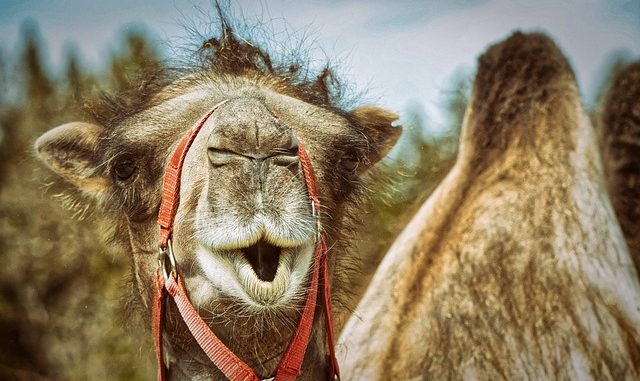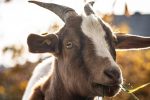
Camel milk is a particularly delicious dairy drink. There are many nutritional and health benefits touted for camel milk proteins and a number of peptides. Fermented camels milk is also of high therapeutic benefit being suitable as an antiallergenic and anti-autism product (Izadi et al., 2019).
Camel milk has been drunk for centuries, especially by the nomadic tribes in the harsh and forbidding deserts of Arabia.
Nutritional Properties of Camels Milk
One-half cup (120 ml) of camels milk contains the following nutrients:
- Calories: 50
- Protein: 3 grams
- Fat: 3 grams
- Carbs: 5 grams
- Thiamine: 29% of the Daily Value (DV)
- Riboflavin: 8% of the DV
- Calcium: 16% of the DV
- Potassium: 6% of the DV
- Phosphorus: 6% of the DV
- Vitamin C: 5% of the DV
The milk is attributed with antimicrobial, antioxidant, antiradical, antidiabetic, angiotensin-converting enzyme inhibitory, anticancer, anti-inflammatory, hepatoprotective, antiallergic, and anti-autism activities.
The most important bioactive compounds affecting health functions are some minerals (zinc and magnesium), vitamins (C and E), protective proteins (lactoferrin, lysozyme, and immunoglobulins), and antioxidant enzymes (glutathione peroxidase and superoxide dismutase).
The milk proteins have been extensively reviewed (Hailu et al., 2016).
Bioactive peptides derived from Ca-M proteins during fermentation processes and hydrolysis reactions by proteolytic enzymes play protective roles for body cells through the release of amino acids such as proline.
In contrast with bovine milk, Ca-M has lower antiallergic effects due to the presence of immunoglobins and its protein (free of β-lactoglobulin) profile. The short- and long-term regular consumption of Ca-M because of the suppression of oxidative/inflammation stresses significantly improves diabetes and hypertension in adults and the behavioral of children with autism spectrum disorder.
Uses For Camel Milk
Use it instead of cow, donkey or other dairy milks. It is certainly used in coffee but gives the beverage a slight salty note.
The gross composition of cows milk and camels milk is very similar. There are differences in the microstructure of protein micelles, lipid globules, and protective protein compositions. It means that processing camel milk will be different to other dairy milks.
References
, , , , , & (2016). Functional and technological properties of camel milk proteins: A review. Journal of Dairy Research, 83(04), pp. 422–429 (Article)
Izadi, A., Khedmat, L., Mojtahedi, S.Y. (2019) Nutritional and therapeutic perspectives of camel milk and its protein hydrolysates: A review on versatile biofunctional properties. J. Functional Foods. 60 September 103441 (Article)



I love a camel me.
Have you tried camel’s milk soap ? Just one of the best and creates a brilliant lather. The milk is extremely expensive because I imagine it must be so difficult to milk these camels. I mean they are not the happiest of bunnies. I know they have long pregnancies and you need a big farm for these beasts. It also means lots of pasture and feed + veterinary bills are higher than many would like to see. A lot of labor goes into keeping a camel so I just think this is not going to take off as a product in the long run.